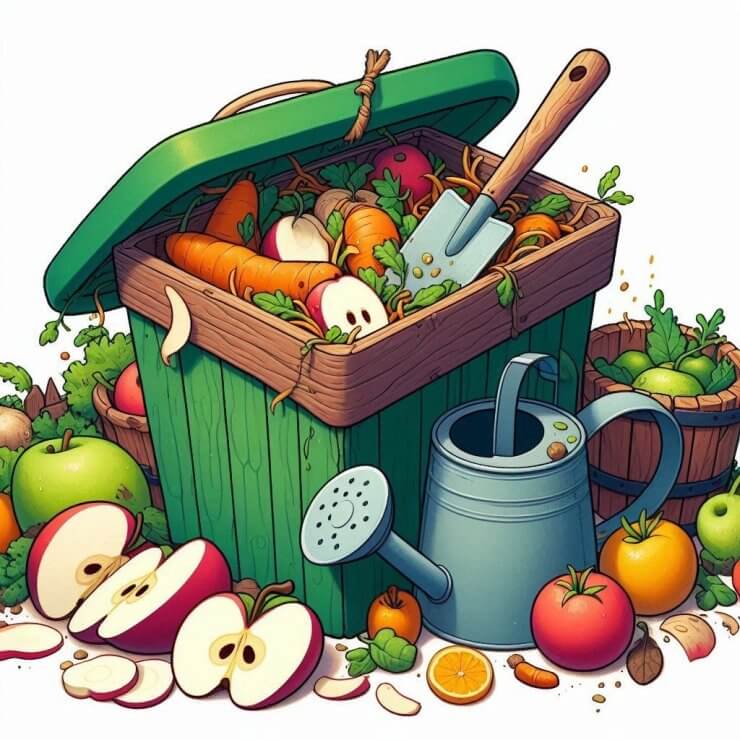Read by Michael Flamel

Ladies and gentlemen, gather ‘round and let me regale you with a tale of modern alchemy. No, we’re not turning lead into gold here—something far more practical, I assure you. I’m talking about the humble, yet transformative, act of composting. Once relegated to the backyards of only the most ardent gardeners and eco-warriors, composting is now taking America by storm. And if you haven’t jumped on the bandwagon yet, well, let’s just say you’re missing out on some real earthy fun!
A Brief History of Composting in America
Composting has been around for centuries, dating back to the time when our ancestors realized that burying their kitchen scraps could somehow make their crops grow better. Fast-forward to the early 20th century, and composting started to gain traction in the United States, especially during the victory garden movement of World War II. Back then, it was all about patriotism and self-sufficiency. These days, it’s more about saving the planet and, let’s be honest, one-upping your neighbor’s tomato yield.
What Is Composting, Really?
For the uninitiated, composting might sound like a fancy word for letting your garbage rot in the backyard. But oh, it’s so much more. Composting is the process of turning organic waste—think kitchen scraps, garden clippings, and even your old coffee grounds—into nutrient-rich humus that plants absolutely adore. It’s like feeding your garden a superfood smoothie, packed with all the good stuff it needs to thrive.
Here’s how it works: You start with a balanced mix of “greens” (nitrogen-rich materials like fruit and vegetable scraps) and “browns” (carbon-rich materials like leaves and newspaper). Add a dash of water, a sprinkle of air, and let nature do its thing. Microorganisms break down the materials, and before you know it, you’ve got black gold.
Getting Started: Tools of the Trade
Now, before you run off to start your composting journey, you’ll need a few basic tools. Here’s my foolproof starter kit for the aspiring compost connoisseur:
Compost Bin: You can buy one, build one, or even repurpose an old trash can. Just make sure it’s got good ventilation.
Pitchfork or Turning Tool: For mixing your compost. It’s like giving your compost a good stir to keep everything cooking evenly.
Compost Thermometer: To ensure your pile is heating up properly. Because no one likes a cold compost.
Watering Can or Hose: Your compost pile needs to stay moist, like a wrung-out sponge.
Kitchen Scrap Container: To collect all your kitchen goodies before they make their way to the pile.
The Benefits of Composting
Why should you bother? Let me count the ways. Composting reduces the amount of waste that ends up in landfills. It enriches your soil, helps retain moisture, and even suppresses plant diseases and pests. Plus, there’s something incredibly satisfying about turning yesterday’s dinner into tomorrow’s bloom.
And if you’re short on space or time, might I direct you to the modern marvel that is the Lomie countertop composter? Several of my colleagues here at the gardening desk swear by it. It’s compact, efficient, and perfect for urban composters. You can read all about it in our related story here.
The Compost Craze
So, there you have it, folks. Composting is not just a trend; it’s a movement. And as your intrepid gardening reporter, I can attest that once you start, there’s no going back. Your plants will thank you, your garbage man will thank you, and who knows? You might just find a new hobby that’s both dirty and delightful.
Until next time, happy composting!


 Previous
Previous


